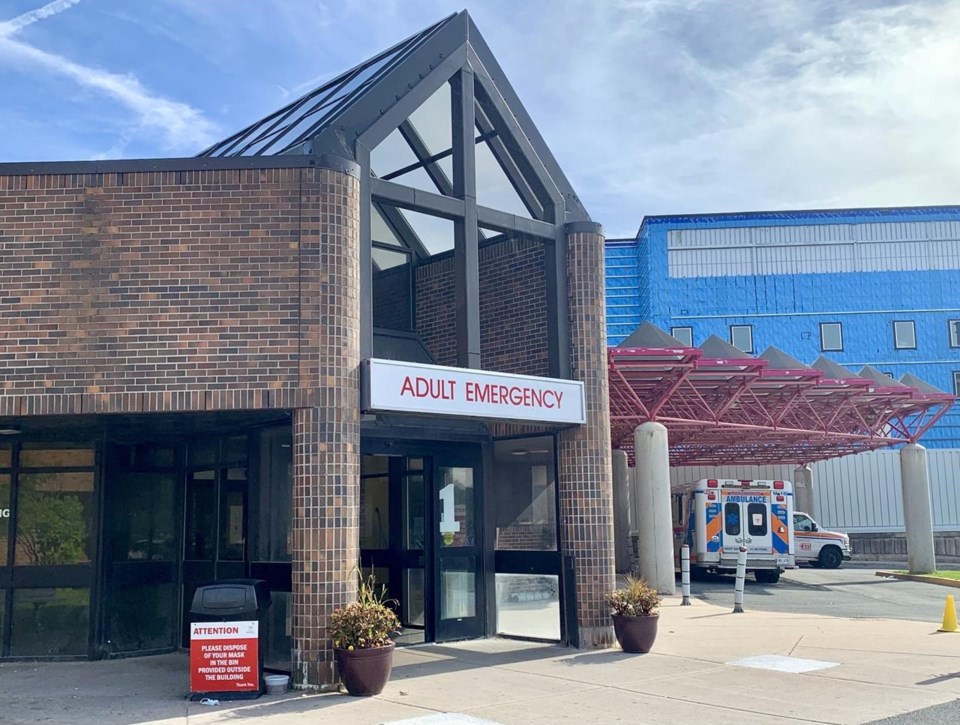ST. JOHN'S, N.L. — The woman in the corner of the emergency room still haunts Dr. Gerard Farrell, president of the Newfoundland and Labrador Medical Association. Obviously suffering from dementia, she was impossible to miss as he passed back and forth, always sitting in the same chair in an environment not built to care for her.
"She wasn't there because she needed emergency care. She was there because she needed more care than she could get in the home," Farrell said in an interview. "But there was no place else for her to go."
The woman is the example he provides when asked about his recent experiences with patients that the provincial health authority calls "community emergencies" — patients brought to an emergency department and admitted, despite not meeting the criteria for admission.
"The issue is serious and significant," Farrell said, adding that community emergencies are an example of how emergency rooms are bearing the brunt of health-care staffing shortages.
Documents show Newfoundland and Labrador health officials began tracking these patients in April 2022 after their numbers increased significantly during the COVID-19 pandemic, particularly as the Omicron variant began spreading through the population in late 2021.
"Families and personal care home facilities are often unable to cope with care demands," reads a briefing note from January 2022, obtained by The Canadian Press through access to information legislation. "Patients are frequently sent from personal care home facilities who identify the patient as an increased level of care, deemed unmanageable at that facility."
These admissions reduced emergency room capacities by up to 30 per cent on any given day, as the patients waited for "emergency community supports" or other services, the note said. Some waited for weeks.
"The (emergency department) environment is poorly adapted to meet the needs of older, vulnerable adults," the note continued, adding that these patients are more likely to decline or lose their independence. For patients with dementia, the frantic ER atmosphere raises the risk of falls and delirium, which then increases their chances of dying, the document said.
"The phrase 'moral injury' is one that really resonates with me," Farrell said about the emotional impact of trying to care for people in a place not built for their needs amid faltering support systems. The term refers to the particular trauma felt when someone is confronted with a situation that violates their core values.
Officials logged 151 "community emergency" admissions across Newfoundland and Labrador's Eastern Heath authority from April 1, 2022, to March 7, 2023. Numbers before last April were not available. Before the province's four health authorities were amalgamated this spring, Eastern Health was the largest, serving roughly 300,000 people, or about three-fifths of the provincial population, including the capital of St. John's.
Nobody at the provincial health authority was available for an interview on the issue of community emergency admissions.
A crushing sense of moral injury was a common refrain among the doctors and health-care workers Dr. Jasmine Mah spoke to for her research on community emergencies — or "orphan patients" — in Halifax.
"They're trying their best to care for someone in a system that's not designed for that care," said Mah, who is a medical resident at Dalhousie University. Like the woman in Farrell's example, most community emergency patients would be best helped by community supports — a spot in a well-staffed care facility, more access to home care, or help for the family members taking care of them, she said.
Halifax's QEII Health Sciences Centre emergency department recorded 109 community emergencies in 2021 and roughly 120 cases in 2022, according to Mah's research. That was up from 33 reported in 2019. The hospital is the largest in the city, which is home to about 440,000 people.
Provinces track "alternative level of care" patients, who may have needed emergency care when they arrived at the hospital but have nowhere to go once they've been treated. However, community emergencies, also called social admissions, haven't yet been widely researched or documented, Mah said in an interview.
She applauded Newfoundland and Labrador's efforts to monitor community emergencies, since they point out key areas where support systems outside the hospital are crumbling. She also wasn't surprised to hear that numbers surged during a COVID-19 wave.
The pandemic overwhelmed the heath-care system and left behind a critical shortage of family doctors and primary care providers, she said. It also helped precipitate a housing and affordability crisis. Some social admissions are people who've lost their house or can no longer afford their meal or care program, she said.
In Newfoundland and Labrador, Farrell is also pleased that health authorities are now tracking the issue. "The people in the system are doing the best they can to try and fill the gaps, there's no question," he said. "But it is a big problem."
This report by The Canadian Press was first published Aug. 16, 2023.
Sarah Smellie, The Canadian Press




